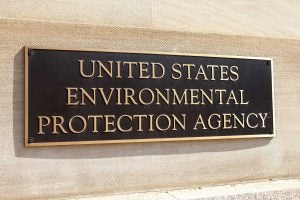Humans sometimes engage in bizarre behavior: We say one thing and do another. Do you remember in elementary school how little boys treat little girls that they have a crush on? Often, the boy will be mean to the girl. Psychology tells us that this contradictory behavior is supposed to be a coping mechanism that reduces the pain of a potential rejection.
Unfortunately, not everyone grows out of those childish habits. We often see this behavior from activists opposed to modern agriculture.
The Center for Food Safety and Pollinator Stewardship Council are good examples. The groups sued the U.S. Environmental Protection Agency over its 2013 registration of sulfoxaflor. Sulfoxaflor is a new class of insecticides effective against certain insects that are increasingly resistant to older pesticides. The EPA conducted a thorough review of sulfoxaflor under the Federal Insecticide, Fungicide, and Rodenticide Act, concluding that its use doesn’t cause unreasonable adverse effects on human health or the environment. But in their lawsuit, CFS and PSC claimed the EPA didn’t properly evaluate how this new class of insecticides would impact pollinators. The Ninth Circuit Court — which covers much of the western U.S., including California and Hawaii — agreed and vacated the EPA’s registration in 2015.
So the EPA went back to the drawing board. It revised the registration for two types of applications: on crops that don’t attract bees, and on crops where the insecticide wouldn’t be applied when bees were present.

In the meantime, sulfoxaflor’s proponents submitted additional scientific research to the agency about its long-term effects on pollinators. The EPA then conducted a new comprehensive risk assessment and concluded it could safely restore all of the 2013 registrations, added some new uses, and removed some 2016 application restrictions.
But CFS and PSC still weren’t happy. So they sued the EPA again, this time claiming the agency committed a technical violation of the Endangered Species Act. The EPA is defending the lawsuit and expects a ruling from the Ninth Circuit Court at any time.
So how is this an example of do-what-I-say-not-as-i-do case? Because there is no question that sulfoxaflor is a better pesticide across the board. As the EPA argued to the court, “The equities are overwhelming that sulfoxaflor is better for species across the board — that’s mammals, freshwater species, and pollinators.”
It carries no risk to humans. It’s highly selective and targets only a range of piercing and sucking insects. Sulfoxaflor is also less toxic than its older counterparts. It requires fewer applications and has a lower application rate. And here’s the best part: It dissipates quickly in pollen and nectar — so the risk to pollinators is even more remote.
If CFS and PSC are really so concerned about the environment and pollinator health, why are they fighting so hard to block a new insecticide that will be better for the environment and pollinator health? It makes absolutely no sense.
To keep all of this in context, keep in mind that this is the EPA defending this lawsuit. It’s hardly an agency known for championing pesticides. It followed the FIFRA analysis — a regulatory framework that has served us well for over half a century — and concluded sulfoxaflor didn’t pose an unreasonable risk. And when the Ninth Circuit demanded the EPA give more weight to potential impacts on pollinators, the EPA completed a new comprehensive assessment and reached the same conclusion.
This isn’t some fly-by-night pesticide registration!
I certainly can’t answer for the activist groups’ baffling actions. But my hunch is that they want to block sulfoxaflor, not because it’s actually bad for pollinators, but because the organizations have an anti-pesticide agenda. Perhaps they believe that farmers will just forego any pesticide use if their only options are older insecticides that are becoming ineffective. It’s completely illogical (and not the slightest bit realistic), but not completely unheard of.
The unfortunate result is that access to a new, better insecticide is limited while these activists battle the EPA in court. CFS and PSC represent that little boy in elementary school. Sulfoxaflor is the new, environmentally friendly and sustainable insecticide. But some fear of rejection causes the little boy to tease the little girl mercilessly.
Amanda Zaluckyj blogs under the name The Farmer’s Daughter USA. Her goal is to promote farmers and tackle the misinformation swirling around the U.S. food industry.



